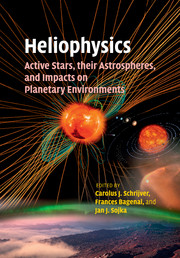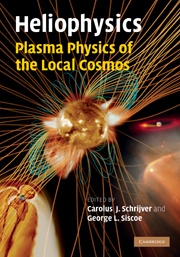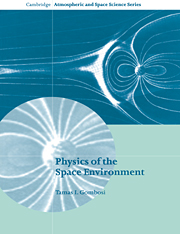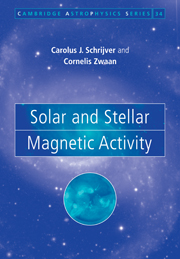Heliophysics: Active Stars, their Astrospheres, and Impacts on Planetary Environments
Heliophysics is a fast-developing scientific discipline that integrates studies of the Sun's variability, the surrounding heliosphere, and the environment and climate of planets. This volume, the fourth in the Heliophysics collection, explores what makes the conditions on Earth 'just right' to sustain life, by comparing Earth to other solar system planets, by comparing solar magnetic activity to that of other stars, and by looking at the properties of evolving exoplanet systems. By taking an interdisciplinary approach and using comparative heliophysics, the authors illustrate how we can learn about our local cosmos by looking beyond it, and in doing so, also enable the converse. Supplementary online resources are provided, including lecture presentations, problem sets and exercise labs, making this ideal as a textbook for advanced undergraduate- and graduate-level courses, as well as a foundational reference for researchers in the many subdisciplines of helio- and astrophysics.
- Authored by a team of expert researchers and trialed at NASAs 'Living with a Star' summer school where this material has been taught
- Unites the many subdisciplines related to the Sun-Earth connections under the umbrella of 'heliophysics', helping readers to quickly grasp the big picture
- Takes a different perspective from the preceding three volumes, by using a comparative heliophysics approach which enables us to learn about our local cosmos by looking beyond it
Product details
April 2016Hardback
9781107090477
406 pages
257 × 175 × 23 mm
0.96kg
133 b/w illus. 13 colour illus. 14 tables
Available
Table of Contents
- Preface
- 1. Introduction Carolus J. Schrijver, Frances Bagenal and Jan J. Sojka
- 2. Solar explosive activity throughout the evolution of the Solar System Rachel Osten
- 3. Astrospheres, stellar winds, and the interstellar medium Brian Wood and Jeffrey L. Linsky
- 4. Effects of stellar eruptions throughout astrospheres Ofer Cohen
- 5. Characteristics of planetary systems Debra Fischer and Ji Wang
- 6. Planetary dynamos: updates and new frontiers Sabine Stanley
- 7. Climates of terrestrial planets David Brain
- 8. Upper atmospheres of the giant planets Luke Moore, Tom Stallard and Marina Garland
- 9. Aeronomy of terrestrial upper atmospheres David E. Siskind and Stephen W. Bougher
- 10. Moons, asteroids, and comets interacting with their surroundings Margaret G. Kivelson
- 11. Dusty plasmas Mihály Horányi
- 12. Energetic-particle environments in the Solar System Norbert Krupp
- 13. Heliophysics with radio scintillation and occultation Mario M. Bisi
- Appendix 1. Authors and editors
- List of illustrations
- List of tables
- References
- Index.









